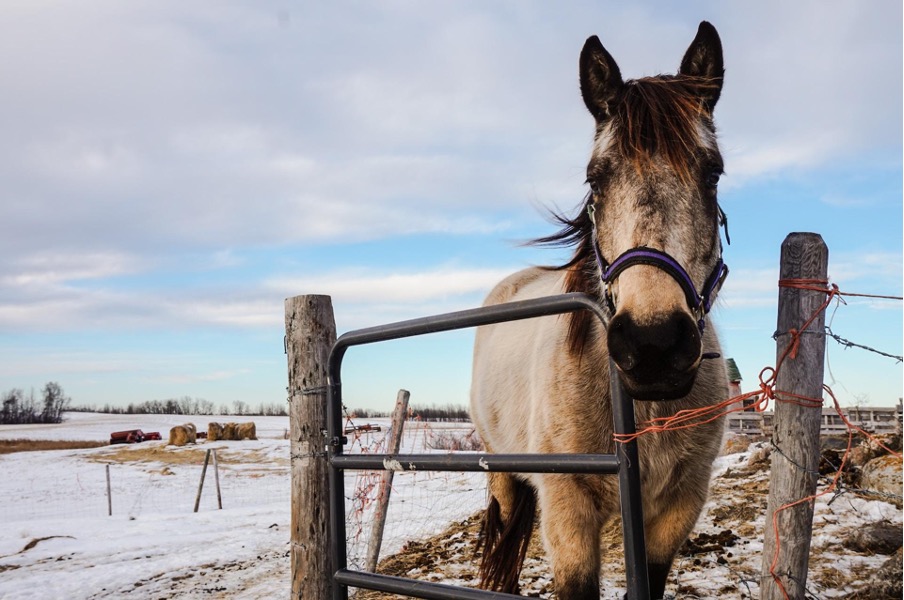Horses have been a substantial part of human history for centuries, providing transportation, farm work, and becoming loyal companions. Unfortunately, not all equines receive the care they deserve as many end up in kill pens where their lives are at risk from slaughterhouses. Let’s learn how to rescue a horse and what you need to know before getting the ball rolling.

Understanding the Process
If you decided to rescue a horse from a kill pen, the first step is understanding how they operate. Horses are auctioned off and those that don’t find buyers can be sent to slaughterhouses via the pens located near state borders due to its illegitimacy across states. Fortunately, with enough commitment and resources, various organizations have saved equines by purchasing them out of these inhumane facilities before it’s too late.
Researching and Selecting a Rescue Organization
It is essential to pick a trustworthy rescue organization for a successful mission. To find the right charity, start by asking around and listening to others who have had experience with them. Those people may share contacts with reputable organizations that are good at saving pets. You can also check websites like Equine Rescue Network which provide more data about various charities. A good rescue group should be experienced enough, transparent in their operations, and enjoy an excellent reputation within the community.
Fundraising and Preparing for Rescue
Choosing the rescue organization is just the start, as fundraising for successful rescue is key. Fortunately, there are plenty of avenues to acquire funds: crowdfunding, grant applications or generous donations can all contribute to this noble cause. It may be difficult at times but fundraising remains paramount in making sure your mission succeeds!
Before rescuing a horse and giving it a second chance, it’s crucial to plan ahead. Transportation horses is the initial step in saving an animal from a kill pen. Equines are rather large animals and so require specialized care when being moved. Considering this, you must also provide an area for quarantine. Newly acquired horses are often isolated upon arrival in order to verify their health status and avoid putting other equines at risk of catching any illnesses or diseases. Last but not least, veterinary attention should be considered essential for recently rescued horses. As medical treatment may be needed during the transition period.
The Rescue Process
The starting point should be visiting kill pens to choose a horse. But it’s critical not to rush this stage – take your time getting acquainted with the animal you’ve chosen before attempting to bring it home. Doing so helps build trust between yourself and the equine while making its transition much smoother.
Moving forward, it’s time to engage with the kill pen owner in order to purchase your desired horse. Keep in mind that this can prove difficult as these individuals have a reputation for being hard negotiators. As such, remain calm and professional throughout the process. Ensure you comprehend all terms of the sale before concluding anything.
Finding your new equine friend is only half the battle. Transporting them to their new home may be a real challenge, as horses tend to feel apprehensive when put into an unfamiliar environment like a trailer. To ensure this process goes smoothly, it’s essential that you take the time necessary to make sure they are comfortable and use gentle persistence while loading them up.

After Rescue Care
Newly rescued horses must be given a customized diet to help them recuperate and become strong. Working with a veterinarian to craft an individualized feeding plan is vital for ensuring the animal receives all their necessary nutrition.
The next step is to give suitable housing and sustenance. Horses require solid space for movement and exercise, as well as defense from the weather. Pay attention to their exact requirements in order to make sure the equines have proper living space.
Medical attention should also be taken into account. Horses that have recently been saved require ongoing care, ranging from vaccinations and deworming to dental treatment. Working with a vet will form the foundation for creating an effective healthcare plan tailored to meet their needs moving forward.
The most important step is to provide the horse with training as well as socialization. Many of these recovered horses may have experienced traumatic episodes in their past and require special attention. You should help them become more trusting of humans, not to mention adapt to other equines. To ensure success during this phase, team up with an experienced trainer who can create a personalized plan suited to your horse’s particular needs.
Conclusion
Through careful consideration of all points mentioned here, rescuing a horse from a kill pen can be successful. Taking into account reputable rescue organizations, fundraising efforts, and having an organized plan, you can give a horse a new thriving chapter in life that it deserves!
Related Reading
